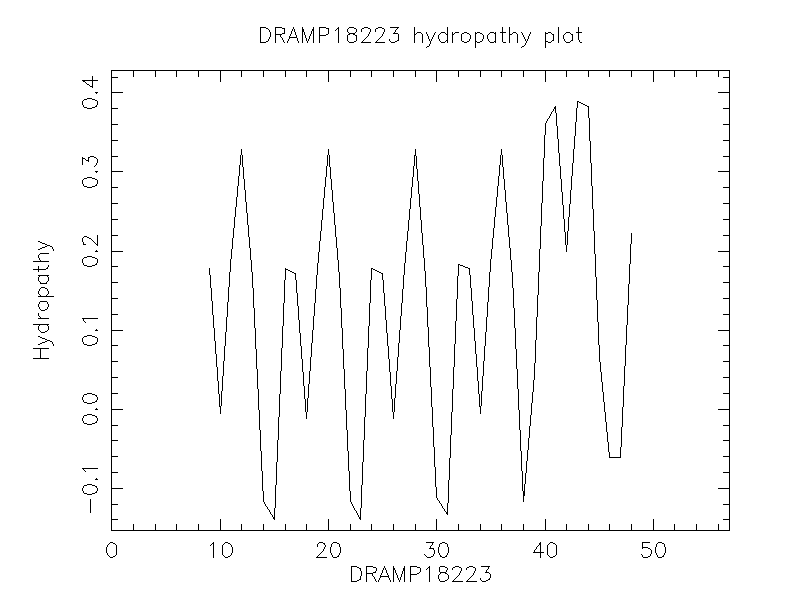General Information
-
DRAMP ID
- DRAMP18223
-
Peptide Name
- Sonorensin(Bacteriocin)
-
Source
- Bacillus sonorensis MT93
-
Family
- Belongs to the class I bacteriocin
-
Gene
- Not found
-
Sequence
- CWSCMGHSCWSCMGHSCWSCAGHSCWSCMGHSCWSCMGHSCWSCAGHCCGSCWHGGM
-
Sequence Length
- 57
-
UniProt Entry
- X2CRH8
-
Protein Existence
Activity Information
-
Biological Activity
- Antimicrobial, Antibacterial, Anti-Gram+, Anti-Gram-
-
Target Organism
- Gram-positive, Gram-negative (broad spectrum)
-
Hemolytic Activity
-
- No hemolysis information or data found in the reference(s) presented in this entry
-
Cytotoxicity
-
- Not included yet
-
Binding Target
- Not found
Structure Information
-
Linear/Cyclic
- Not included yet
-
N-terminal Modification
- Not included yet
-
C-terminal Modification
- Not included yet
-
Nonterminal Modifications and Unusual Amino Acids
- Not included yet
-
Stereochemistry
- Not included yet
-
Structure
- Not found
-
Structure Description
- Not found
-
Helical Wheel Diagram
-
PDB ID
- None
-
Predicted Structure
- There is no predicted structure for DRAMP18223.
Physicochemical Information
-
Formula
- C249H338N78O70S20
Absent Amino Acids
- DEFIKLNPQRTVY
Common Amino Acids
- C
Mass
- 6185.1
PI
- 7.11
Basic Residues
- 7
Acidic Residues
- 0
Hydrophobic Residues
- 9
Net Charge
- +7
-
Boman Index
- -1408
Hydrophobicity
- 0.153
Aliphatic Index
- 3.51
Half Life
-
- Mammalian:1.2 hour
- Yeast:>20 hour
- E.coli:>10 hour
Extinction Coefficient Cystines
- 39375
Absorbance 280nm
- 703.13
Polar Residues
- 36
DRAMP18223

Comments Information
The Clustal W alignment of the N terminus of sonorensin revealed homology with the leader sequences of protoxins from various Bacillus strains. This indicated that sonorensin, produced initially as a protoxin, was posttransitionally modified to active bacteriocin. The purified sonorensin was also found to be heat stable, stable at low temperature, biologically active over a wide pH range, and not affected in the presence of organic solvents, surfactants, and reducing agents. However, sonoresin was protease-sensitive.
Literature Information
- ·Literature 1
-
Title
- Sonorensin: an antimicrobial peptide, belonging to the heterocycloanthracin subfamily of bacteriocins, from a new marine isolate, Bacillus sonorensis MT93.
-
Pubmed ID
- 24610839
-
Reference
- Appl Environ Microbiol. 2014 May;80(10):2981-90.
-
Author
- Chopra L, Singh G, Choudhary V, Sahoo DK.

